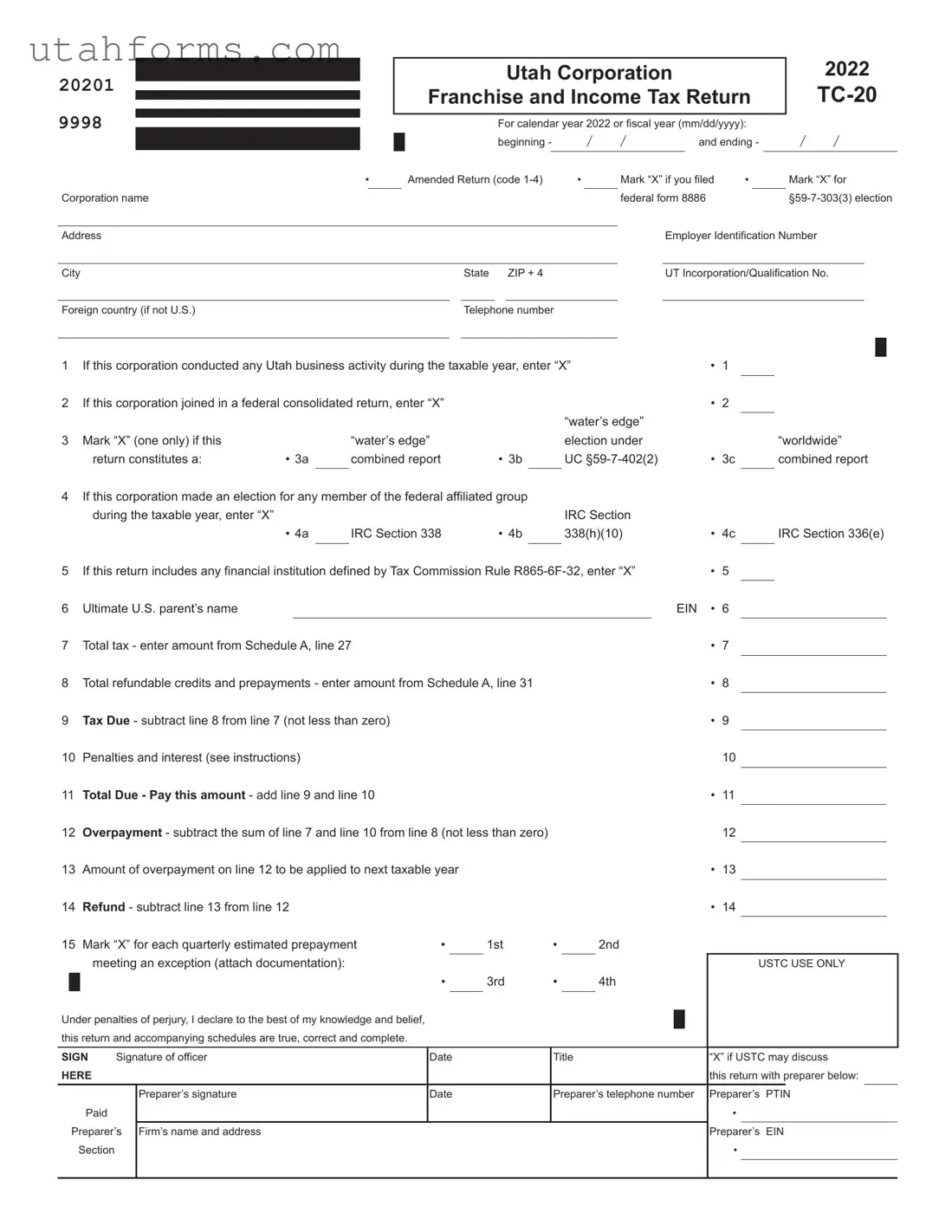Fill Out Your Utah Tc 20 Form
The Utah TC-20 form, officially known as the Utah Corporation Franchise and Income Tax Return, is a document filed by corporations to report their income, calculate taxes due, and cover other tax-related information for the state of Utah. Aimed at both domestic and foreign corporations operating within the state for the 2020 tax year, the form includes sections for reporting annual financial activity, making tax calculations, and declaring deductions or credits. Whether amending a prior return or documenting current fiscal details, entities must navigate through specific sections to comply with state tax obligations, including providing information about corporate structure, ownership changes, and tax liability adjustments.
Fill Out My Document










